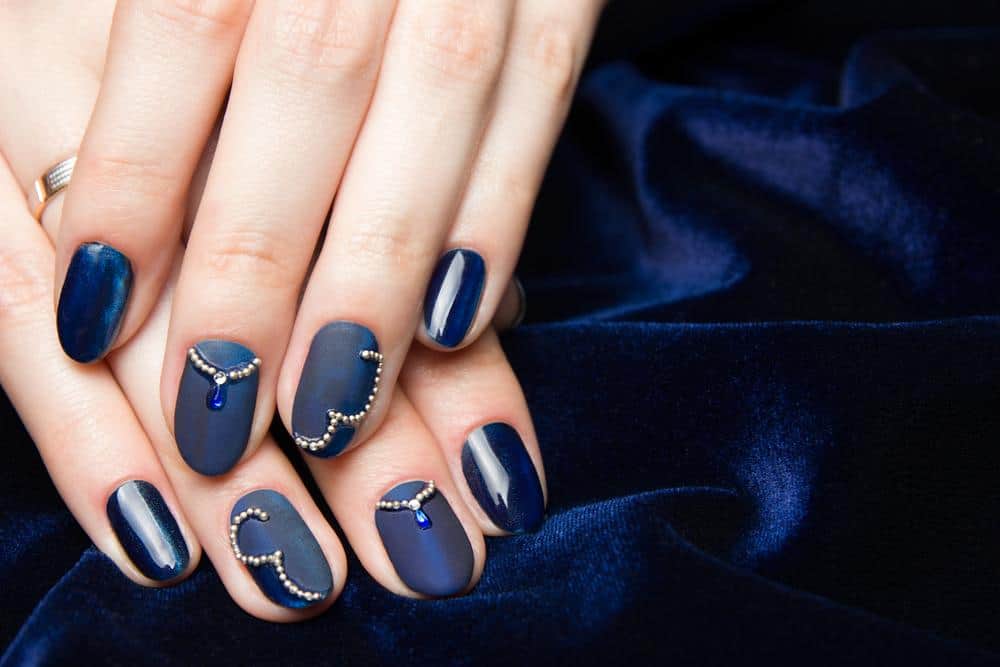When it comes to long-lasting nail treatments, Shellac and Gel have become two of the most popular options worldwide. Both treatments offer durable finishes that last for weeks, making them ideal for people who want low-maintenance manicures. However, understanding the differences between Shellac vs Gel can help you make an informed decision about which treatment is best for your needs.
Choosing the right nail treatment can be overwhelming, especially with so many options available in the market. Shellac and Gel nails have distinct characteristics that cater to different preferences, lifestyles, and skin types. In this comprehensive guide, we'll break down the key differences, benefits, and drawbacks of both treatments, ensuring you're equipped to make the right choice for your nails.
Whether you're a beauty enthusiast or someone looking for a practical solution for long-lasting manicures, this article will provide you with all the essential information you need. From application processes to maintenance tips, we'll cover everything you need to know about Shellac vs Gel nails.
Read also:Why Do I Have A Migraine When I Wake Up Understanding Morning Migraines
Table of Contents
- Introduction to Shellac vs Gel
- What is Shellac?
- What is Gel?
- Application Process
- Longevity and Durability
- Removal Process
- Cost Comparison
- Maintenance Tips
- Suitability for Different Skin Types
- Conclusion and Final Thoughts
Introduction to Shellac vs Gel
Before diving into the specifics of Shellac vs Gel, it's important to understand why these treatments have gained so much popularity in recent years. The demand for long-lasting, chip-resistant manicures has skyrocketed, with both Shellac and Gel nails offering solutions that cater to this need.
One of the key reasons for their popularity is their ability to maintain a flawless finish for up to three weeks. This makes them ideal for busy individuals who don't have the time or inclination to visit the salon frequently. Additionally, both treatments provide a high-gloss finish that enhances the natural beauty of the nails.
However, despite their similarities, Shellac and Gel nails differ in terms of application, removal, cost, and suitability for different skin types. Understanding these differences can help you choose the treatment that aligns with your lifestyle and preferences.
What is Shellac?
Shellac is a hybrid nail polish that combines the properties of traditional polish and gel nails. It is applied similarly to regular nail polish but requires UV light curing to set. One of the key advantages of Shellac is its quick-drying property, which reduces the risk of smudging.
Here are some key features of Shellac:
- Long-lasting finish that lasts up to 14 days.
- Available in a wide range of colors and finishes.
- Requires a UV light for curing.
- Offers a natural-looking finish that enhances the nails.
Shellac has become a favorite among nail enthusiasts due to its ease of application and removal. Unlike traditional gel nails, Shellac can be removed with acetone, making the process less damaging to the nails.
Read also:Discover The Allure Of Winter Fragrance Your Ultimate Guide To Cozy And Invigorating Scents
Benefits of Shellac
Shellac offers several benefits that make it an attractive option for those seeking long-lasting manicures. Some of these benefits include:
- Quick application process with minimal drying time.
- High-gloss finish that mimics the look of gel nails.
- Gentle removal process that doesn't damage the natural nails.
- Wide range of colors and finishes to suit different preferences.
According to a study by the American Academy of Dermatology, Shellac is considered a safer option for individuals with sensitive skin due to its non-toxic formula and gentle removal process.
What is Gel?
Gel nails, on the other hand, are a more traditional option that involves applying a gel-based product to the nails, followed by UV or LED light curing. Gel nails are known for their durability and high-gloss finish, making them a popular choice for special occasions and long-lasting manicures.
Key features of Gel nails include:
- Durable finish that lasts up to 3-4 weeks.
- Strong adhesion to the nails, reducing the risk of chipping.
- Available in a wide range of colors and finishes.
- Requires professional removal using a soak-off process.
Gel nails are often preferred by individuals who want a more robust and long-lasting manicure. However, the removal process can be more time-consuming and may require professional assistance.
Benefits of Gel Nails
Gel nails offer several advantages that make them a popular choice for many individuals. Some of these benefits include:
- Exceptional durability and resistance to chipping.
- High-gloss finish that enhances the natural beauty of the nails.
- Wide range of colors and finishes to suit different preferences.
- Long-lasting results that require less frequent touch-ups.
Research published in the Journal of Dermatology suggests that Gel nails are particularly suitable for individuals who engage in activities that put their nails under stress, such as typing or manual labor.
Application Process
The application process for both Shellac and Gel nails involves similar steps, but there are some key differences to note. Both treatments require the use of UV or LED lights to cure the product, ensuring a long-lasting finish.
Here's a step-by-step guide to the application process for both treatments:
- Preparation: Start by cleaning and shaping the nails to create a smooth surface.
- Base Coat: Apply a base coat to protect the nails and enhance adhesion.
- Color Application: Apply the Shellac or Gel polish in thin layers, curing each layer under UV or LED light.
- Top Coat: Finish with a top coat to seal the manicure and enhance the gloss.
While the application process is similar, Shellac is often considered easier to apply due to its quick-drying properties and simpler removal process.
Longevity and Durability
One of the key factors to consider when choosing between Shellac vs Gel is their longevity and durability. Both treatments offer long-lasting results, but Gel nails are generally considered more durable due to their stronger adhesion to the nails.
Here's a comparison of the longevity and durability of both treatments:
- Shellac: Lasts up to 14 days with minimal chipping or peeling.
- Gel: Lasts up to 3-4 weeks with excellent resistance to chipping and peeling.
While Shellac offers a more natural-looking finish, Gel nails are ideal for individuals who require extra durability and strength.
Removal Process
The removal process is another important factor to consider when choosing between Shellac vs Gel. Both treatments require specific methods for removal, but Shellac is generally considered easier to remove.
Here's a breakdown of the removal process for both treatments:
- Shellac: Can be removed using acetone-soaked cotton pads, typically taking 10-15 minutes.
- Gel: Requires a soak-off process using a specialized remover, typically taking 20-30 minutes.
According to a report by the International Journal of Cosmetic Science, the removal process for Shellac is less damaging to the natural nails, making it a safer option for frequent users.
Cost Comparison
When it comes to cost, both Shellac and Gel nails are relatively affordable, but there are some differences to consider. The cost of each treatment can vary depending on factors such as location, salon, and technician experience.
Here's a cost comparison of Shellac vs Gel:
- Shellac: Typically costs between $30-$50 per application.
- Gel: Typically costs between $40-$60 per application.
While Gel nails may be slightly more expensive upfront, their longer-lasting results can make them a more cost-effective option in the long run.
Maintenance Tips
Maintaining your Shellac or Gel manicure is essential to ensuring its longevity and appearance. Here are some tips to help you keep your nails looking flawless:
- Avoid exposing your nails to harsh chemicals, such as cleaning products or solvents.
- Wear gloves when washing dishes or doing household chores to protect your nails.
- Regularly moisturize your cuticles and nail beds to prevent dryness and cracking.
- Visit your nail technician for touch-ups or maintenance every 2-3 weeks.
By following these maintenance tips, you can ensure your Shellac or Gel manicure lasts as long as possible.
Suitability for Different Skin Types
When choosing between Shellac vs Gel, it's important to consider your skin type and any potential sensitivities. Both treatments are generally safe for most individuals, but some people may experience irritation or allergic reactions.
Here's a breakdown of suitability for different skin types:
- Sensitive Skin: Shellac is often recommended for individuals with sensitive skin due to its non-toxic formula and gentle removal process.
- Normal Skin: Both Shellac and Gel nails are suitable for individuals with normal skin types.
- Dry Skin: Gel nails may be more suitable for individuals with dry skin, as they offer stronger adhesion and protection.
Consulting with a dermatologist or nail technician can help you determine which treatment is best for your skin type and needs.
Conclusion and Final Thoughts
In conclusion, both Shellac and Gel nails offer excellent solutions for long-lasting, chip-resistant manicures. While Shellac is ideal for individuals who want a natural-looking finish and easier removal process, Gel nails are perfect for those seeking extra durability and strength.
When choosing between Shellac vs Gel, consider factors such as longevity, cost, maintenance, and suitability for your skin type. By understanding the differences between these treatments, you can make an informed decision that aligns with your lifestyle and preferences.
We encourage you to share your thoughts and experiences in the comments below. Additionally, feel free to explore our other articles for more beauty tips and advice. Thank you for reading, and we hope this guide has been helpful in your nail treatment journey!



